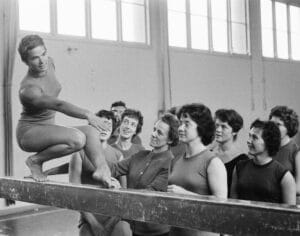
Gymnastics is a sport that has been around for centuries and has evolved significantly throughout history. From its origins in ancient Greece to the modern-day Olympic Games, the evolution of gymnastics has witnessed many changes, both in terms of technique, purpose and equipment.
In this article, we will take a look at the history and evolution of gymnastics, tracing its roots back to ancient Greece and exploring how it has developed into the sport we know today.
Introduction
While modern gymnastics is a popular sport that is practiced and watched all over the world, its origins can be traced back to ancient Greece, through the Middle Ages, and the Renaissance period before being transformed into the sport we are familiar with today.
Ancient Greek Gymnastics
In ancient Greece, the role of gymnastics was multifaceted and deeply entrenched in the societal fabric. Recognized not just as a physical activity, gymnastics was an integral part of the educational curriculum, emphasizing the development of both the body and the mind. The concept of “kalos kagathos,” which translates to “beautiful and good,” was a fundamental ideal in Greek culture. This ideal stressed the importance of achieving excellence in both physical prowess and intellectual capability, and gymnastics was viewed as a primary means to attain it.
The ancient Greeks held the belief that for an individual to lead a fulfilling life, harmony between the mind and the body was imperative. Gymnastics, in this context, was not just about physical exercise; it was a discipline that nurtured mental fortitude, resilience, and a sense of purpose. This holistic approach was deeply rooted in the Greek philosophical tradition, where esteemed philosophers like Plato and Aristotle underscored the value of physical fitness as a conduit to intellectual and moral virtue.
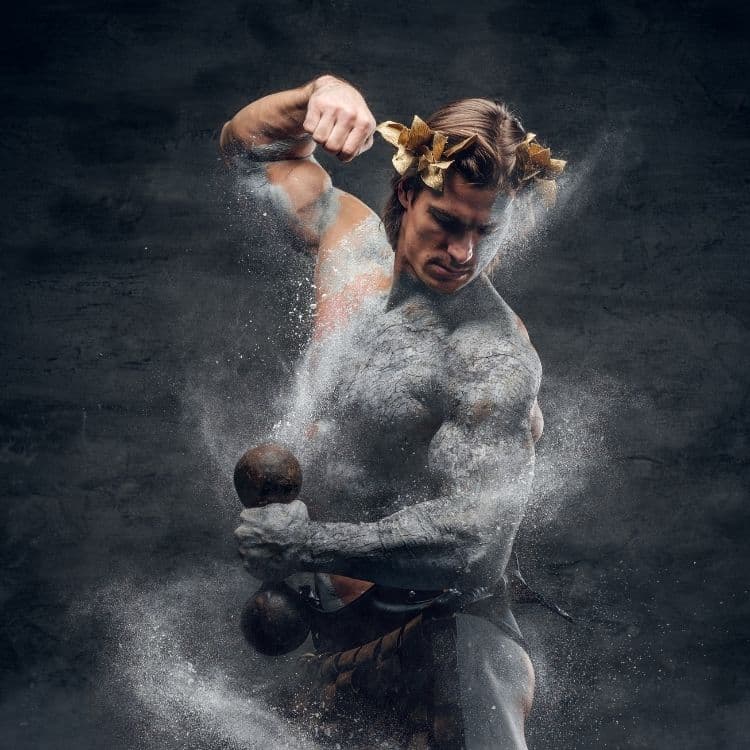
The practical application of gymnastics also had militaristic implications. In an age where physical combat was a norm, preparing young men for the rigors of warfare was essential. Gymnastics, with its emphasis on strength, agility, and endurance, was an ideal training regimen for soldiers. Activities such as running and jumping honed their agility and speed while throwing exercises improved their precision and strength, vital skills on the battlefield.
Ancient Greek Calisthenics
The ancient Greeks practiced a specialized form of gymnastics known as “calisthenics.” Unlike modern gymnastics, which often involves apparatus like beams and bars, calisthenics focuses on body-weight exercises. These routines were meticulously designed to enhance strength, endurance, and flexibility. Participants would engage in a series of activities ranging from basic movements like push-ups and squats to more complex exercises like handstands and plyometric jumps.
Additionally, the gymnasia, or training grounds, were also venues for combat sports such as wrestling and boxing. These sports were more than just competitions; they were rites of passage, testing the mettle of young men and preparing them for the challenges of adulthood. Wrestling, in particular, was a revered sport, emphasizing technique, strategy, and physical strength. Boxing, on the other hand, was a test of endurance and resilience, with participants often enduring grueling matches.
Gymnastics in the Middle Ages
Following the decline of the Roman Empire, a significant portion of the cultural and intellectual advancements from the classical era, including the practice of gymnastics, faced a period of dormancy in Europe. The subsequent era, commonly referred to as the Dark Ages, was marked by socio-political upheavals, economic stagnation, and a general shift away from the urban-centric civilizations of antiquity. As a result, many of the structured physical activities and athletic traditions from the Greco-Roman period faded into obscurity.
However, the Middle Ages, spanning roughly from the 5th to the late 15th century, witnessed a gradual resurgence of interest in physical education, albeit with a different focus and intent. Gymnastic activities, rather than being pursued for holistic well-being or competitive spirit as they were in ancient Greece, became more utilitarian in nature.

The medieval period was characterized by feudalism, a socio-economic system where land was the primary source of power and wealth. Lords and knights, the military elite of this system, required specific physical skills to maintain their status and protect their territories. Consequently, gymnastics and physical training started evolving to cater to these martial needs.
Archery, for instance, emerged as a paramount skill during this period. Beyond its obvious military applications in battles and sieges, archery became a popular pastime among the nobility. The longbow, in particular, was a weapon that required immense strength and precision, and mastering it necessitated rigorous training. Regular archery drills not only honed accuracy but also developed the archer’s upper body strength and concentration.
Similarly, horsemanship, or the art of riding and handling a horse, became an essential skill for knights and warriors. The medieval battlefield was dominated by cavalry units, making proficient riding a matter of life and death. Gymnastic exercises tailored for riders emerged, focusing on enhancing balance, core strength, and coordination. Jousting tournaments, which combined horsemanship with combat skills, also gained prominence as both a sport and a training method.
However, it’s worth noting that while these activities had gymnastic elements, they were distinct from the gymnastics of ancient civilizations. The emphasis during the Middle Ages was more on practical application in warfare than on the philosophical ideals of physical and mental harmony.
By the time the Renaissance period dawned in the late Middle Ages, there was a renewed interest in the classical knowledge of the Greeks and Romans. This revival paved the way for the modern understanding and practice of gymnastics, which would further evolve in the centuries to come.
The Renaissance and Gymnastics
The Renaissance, spanning roughly from the 14th to the 17th century, was a period of profound cultural and intellectual rebirth in Europe. Drawing inspiration from the classical civilizations of Greece and Rome, thinkers, artists, and scholars of the Renaissance sought to bridge the gap between antiquity and their contemporary world. Among the many fields that experienced a resurgence during this era, physical education and gymnastics occupied a significant place.
Central to this revival was the Italian humanist Girolamo Mercuriale. Born in Forlì in 1530, Mercuriale was not only an accomplished physician but also an avid scholar of classical texts. His deep appreciation for ancient civilizations led him to recognize the pivotal role gymnastics played in the holistic development of individuals in those times.
De Arte Gymnastica
In 1569, Mercuriale penned “De Arte Gymnastica,” a seminal work that can be considered one of the earliest comprehensive treatises on physical education. Drawing extensively from ancient sources, Mercuriale meticulously detailed the various exercises practiced by the Greeks and Romans. His objective was not merely to catalog these exercises but to underscore their relevance in the Renaissance context.
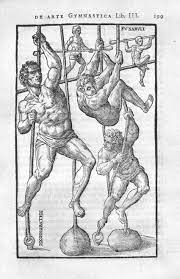
“De Arte Gymnastica” delved into a wide spectrum of physical activities, ranging from basic calisthenics to more specialized exercises. Mercuriale elaborated on the techniques, benefits, and appropriate contexts for each activity. For instance, he discussed exercises that enhanced flexibility, strength, and cardiovascular endurance, highlighting their significance in ensuring a robust physique and overall well-being.
Beyond the mere physical aspect, Mercuriale’s treatise also touched upon the philosophical underpinnings of gymnastics. Echoing the Greek notion of a harmonious balance between the mind and body, he argued that physical exercise was not just a means to achieve a healthy body but also a pathway to mental clarity and intellectual vigor. In essence, Mercuriale posited that the discipline of gymnastics was instrumental in cultivating the Renaissance ideal of the “universal man” – an individual who excelled in both physical and intellectual pursuits.
Moreover, “De Arte Gymnastica” was instrumental in advocating for the integration of gymnastics into educational curricula. Mercuriale believed that just as students were taught literature, mathematics, and sciences, they should also be instructed in physical education to ensure a well-rounded education.
Gymnastics in the 19th Century
In the 19th century, gymnastics began to develop as a sport in its own right. Friedrich Ludwig Jahn, a German physical educator, is credited with founding the first modern gymnastics club in 1811. Jahn believed that gymnastics was an essential part of physical education and emphasized the importance of developing both the mind and body.
The Birth of Modern Gymnastics
The modern form of gymnastics that we know today began to take shape in the late 19th century. Gymnastics was introduced as an Olympic sport at the first modern Olympic Games in Athens in 1896. However, the sport was very different from what we see today. The events included in the first Olympic gymnastics competition were rope climbing, parallel bars, horizontal bar, and vault.
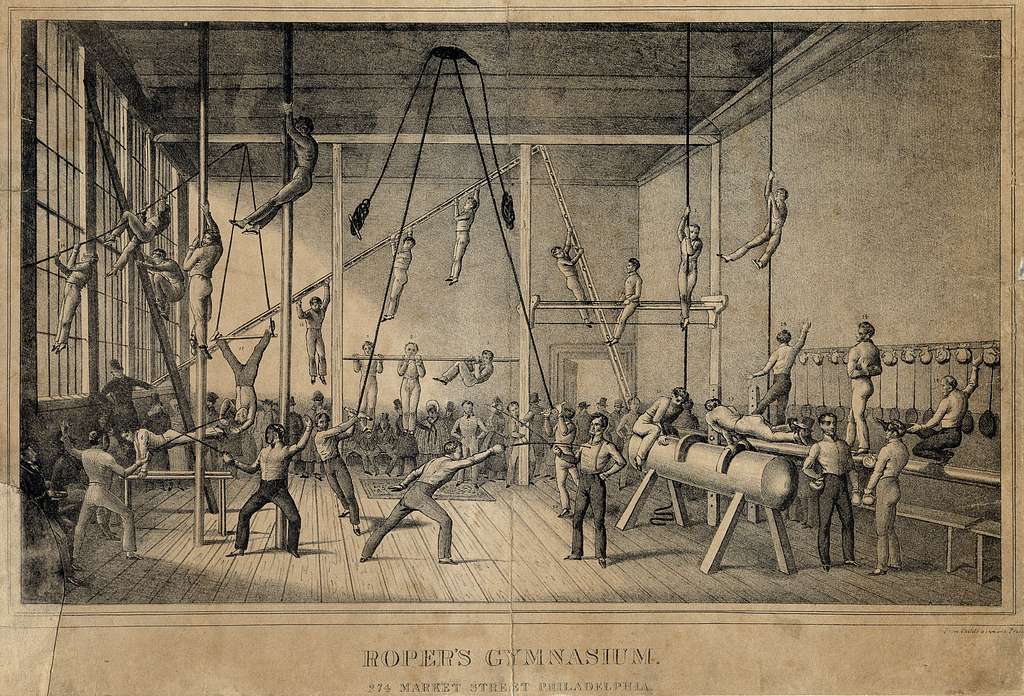
Gymnastics was often performed outside during the early days of modern gymnastics including many early Olympic games.
Apparatus was still very basic until the second half of the 20th century when developments started to include sprung floors and
Gymnastics in the Olympic Games
Since its introduction to the Olympic Games, gymnastics has continued to evolve and grow in popularity. Today, there are two main types of gymnastics: artistic gymnastics and rhythmic gymnastics. Artistic gymnastics includes events such as the vault, uneven bars, balance beam, and floor exercise, while rhythmic gymnastics focuses on the use of various apparatus such as ribbons, balls, and hoops.
In recent years, there has been a push to make gymnastics more accessible and inclusive. This has led to the introduction of new events, such as parkour and freestyle gymnastics, which aim to make the sport more appealing to a wider audience.
The History of Women’s Gymnastics
Women’s gymnastics has evolved tremendously since its inception in the 1800s. This sport was originally created to enhance physical fitness and flexibility, but over time, it has become a competitive sport that showcases incredible athleticism, strength, and grace.
Women’s gymnastics can be traced back to the early 1800s when it was first introduced in Sweden by Pehr Henrik Ling, a physical education teacher. This form of gymnastics was known as Swedish gymnastics, and it was designed to promote fitness and flexibility among women. The exercises consisted of basic movements such as running, jumping, and stretching.
Pioneers of Women’s Gymnastics
The early pioneers of women’s gymnastics were trailblazers who defied societal norms and paved the way for future generations of female gymnasts. Some of the most notable pioneers include:
- Agnes Keleti: Keleti was a Hungarian gymnast who won 10 Olympic medals, including five golds, at the 1952 Helsinki Olympics and the 1956 Melbourne Olympics.
- Vera Caslavska: Caslavska was a Czechoslovakian gymnast who won 7 Olympic gold medals and 4 silver medals in the 1960s, including winning the all-around title at the 1964 Tokyo Olympics.
- Larisa Latynina: Latynina was a Soviet gymnast who won 18 Olympic medals, including 9 golds, at the 1956 Melbourne Olympics, the 1960 Rome Olympics, and the 1964 Tokyo Olympics.
- Margit Korondi: Korondi was a Hungarian gymnast who won six Olympic medals, including four golds, at the 1936 Berlin Olympics and the 1948 London Olympics.
- Maria Gorokhovskaya: Gorokhovskaya was a Soviet gymnast who won two gold medals, five silver medals, and one bronze medal at the 1952 Helsinki Olympics.
- Jeanette Campbell: Campbell was an American gymnast who won four gold medals at the 1928 Amsterdam Olympics and a bronze medal at the 1932 Los Angeles Olympics.
- Alexandra “Sasha” Rabanovitch: Rabanovitch was a Romanian gymnast who won six Olympic medals, including two golds, at the 1936 Berlin Olympics and the 1948 London Olympics.
Olga Korbut
Olga Korbut was a famous gymnast from the Soviet Union who competed in the 1970s. She is often referred to as the “Sparrow from Minsk” and is best known for her innovative and acrobatic routines, which included backflips and other daring maneuvers that were previously unseen in women’s gymnastics.
Korbut competed in the 1972 Munich Olympics, where she won three gold medals and one silver medal. She also won a gold medal and a silver medal at the 1976 Montreal Olympics. Korbut’s success and unique style helped popularize gymnastics around the world and inspired many young girls to take up the sport.
Nadia Comăneci
Nadia Comăneci was a famous gymnast from Romania who competed in the 1970s and 1980s. She is widely considered to be one of the greatest gymnasts of all time and is particularly famous for being the first gymnast to score a perfect 10 at the Olympics.
Comăneci competed in the 1976 Montreal Olympics, where she won three gold medals, one silver medal, and one bronze medal. She also won two gold medals, two silver medals, and one bronze medal at the 1980 Moscow Olympics. Comăneci’s precise and graceful routines captivated audiences around the world and helped popularize gymnastics as a sport.
Comăneci’s legacy in gymnastics continues to this day, and she remains an inspiration to many young gymnasts around the world.
The Evolution of Women’s Gymnastics
Over the years, women’s gymnastics has evolved significantly, with new skills and techniques being introduced that showcase the incredible strength, agility, and grace of female gymnasts. The evolution of women’s gymnastics can be divided into four distinct eras:
Era 1: Early 20th Century
Female gymnastics from the late 19th century up to the 1920s was quite different from modern-day gymnastics. Women’s gymnastics during this time was mainly focused on developing strength and agility, rather than the complex acrobatic skills that we see in modern gymnastics.
What women wore during gymnastics varied depending on the country and the specific gymnasium. In general, women wore long, modest dresses or skirts that covered their legs, and often wore blouses with high necklines. As gymnastics became more popular, gymnasiums began to adopt more practical clothing, such as bloomers or shorts and fitted tops.
Women typically practiced gymnastics in dedicated gymnasiums, which were often part of schools or other educational institutions. These gymnasiums were equipped with basic equipment such as balance beams, parallel bars (uneven bars hadn’t been thought of yet), and vaulting horses. They were often small and lacked many of the amenities and safety features found in modern gyms.

The routines that women performed during gymnastics were typically less complex than those performed today. Routines focused on basic skills such as jumping, basic tumbling, and balancing. Women’s gymnastics during this time was not yet recognized as an Olympic sport, but it was included in other international competitions, such as the World Gymnastics Championships.
Overall, women’s gymnastics during the late 19th century up to the 1920s was a more modest and less complex form of gymnastics than what we see today. However, it played an important role in the development of the sport and helped pave the way for the more advanced gymnastics that we see today.
Era 2: 1920s – 1940s
Women’s gymnastics was first included in the Olympic Games in 1928, at the IX Olympiad in Amsterdam. The inclusion of women’s gymnastics in the Olympics was the result of several factors, including the growing popularity of gymnastics as a sport and the efforts of several individuals and organizations.
One of the key figures in the effort to include women’s gymnastics in the Olympics was the Dutch gymnast, Baroness Wilhelmina “Willy” H. M. E. van der Meer. Van der Meer was a prominent advocate for women’s gymnastics and was instrumental in lobbying the International Olympic Committee (IOC) to include the sport in the Olympics.
Van der Meer’s efforts were supported by other organizations, including the International Gymnastics Federation (FIG), which had been founded in 1881 and was working to promote the sport of gymnastics worldwide. The FIG played an important role in standardizing gymnastics rules and regulations, which helped to make the sport more organized and accessible to athletes around the world.
Despite these efforts, there was some opposition to the inclusion of women’s gymnastics in the Olympics. Some critics argued that women were not physically capable of performing the same skills as men and that the inclusion of women’s gymnastics would detract from the purity of the Olympic Games. However, these arguments were ultimately not persuasive, and women’s gymnastics was included in the Olympics in 1928.
The inclusion of women’s gymnastics in the Olympics was a significant milestone for the sport and helped to increase its popularity and visibility worldwide.
The outbreak of the second world war in Europe in 1939 prevented any major competitions from taking place in the 1940s however, female gymnastics was popular in Nazi Germany, and the Nazi regime actively promoted the sport as part of its ideology of physical fitness and strength. The Nazi regime saw gymnastics as a way to promote the health and vitality of the German people, and as a way to cultivate discipline, obedience, and loyalty to the state.

The Nazi Party created several organizations dedicated to promoting physical fitness and gymnastics, including the Reichsbund für Leibesübungen (Reich Association for Physical Exercise), which oversaw all sports and physical education in Nazi Germany. The Reichsbund für Leibesübungen promoted gymnastics as a way to develop “Aryan” physical attributes such as strength, endurance, and agility, and as a way to prepare young people for military service.
Women’s gymnastics was also used as a tool for propaganda, and female gymnasts were often portrayed as models of physical perfection and patriotism. The Nazi regime encouraged women to participate in gymnastics as a way to promote health, discipline, and self-control, and as a way to contribute to the greater good of the state.
Despite the propaganda and promotion of gymnastics by the Nazi regime, there were some who resisted the regime’s efforts to control the sport. Some female gymnasts and gymnastics instructors were members of the resistance movement and used the sport as a way to express their opposition to the regime and to promote alternative visions of physical fitness and strength.
Era 3: 1950s – 1970s
During this era, women’s gymnastics became primarily focused on artistic gymnastics, which included four events: vault, uneven bars, balance beam, and floor exercise. This format is still in use in modern-day gymnastics.
The Cold War of the 1950s had a significant impact on female gymnastics, particularly in the competition between the Soviet Union and the United States. Gymnastics became a way for both countries to showcase their political ideologies and promote their countries’ respective systems.
Eastern European countries, particularly the Soviet Union and East Germany, produced many successful gymnasts in the 1950s, 60s, and 70s such as Olga Korbut (1972 onwards). There were several factors that contributed to this success, including government investment in sports programs, a focus on early talent identification and development, and a strong emphasis on the importance of physical fitness and national pride.
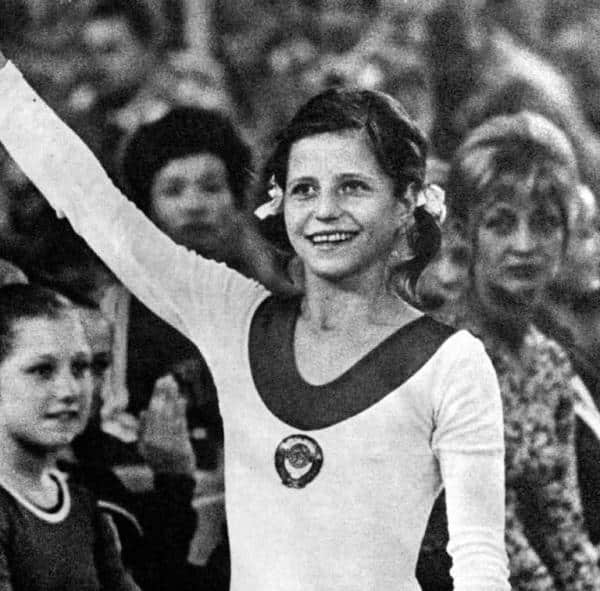
The Soviet Union and East Germany had centralized sports programs that were funded and controlled by the government, which meant that talented gymnasts were identified at a young age and given access to high-level coaching and training facilities. These gymnasts were often separated from their families and placed in specialized training centers, where they would spend hours each day practicing and perfecting their skills.
In addition to the investment in sports programs, Eastern European countries also placed a strong emphasis on the importance of physical fitness and national pride. Gymnastics was seen as a way to showcase the physical and mental strength of their athletes, and to demonstrate the superiority of their political and economic systems.
The success of Eastern European countries in female gymnastics during this period also had a lasting impact on the sport. Their training methods, including the use of specialized facilities, early talent identification, and focus on technical excellence, have been adopted by gymnastics programs around the world. However, it is also important to note that the success of Eastern European gymnasts was often accompanied by allegations of doping and other forms of abuse, which have since been investigated and condemned by international sports organizations.
Era 4: 1980s – 1990s
The next era of women’s gymnastics was marked by a shift toward power and athleticism. Gymnasts began incorporating more difficult skills into their routines, including tumbling passes and acrobatic elements. Equipment developments in the apparatus also helped gymnasts push the limits of what was possible. This era saw the rise of gymnasts such as Nadia Comăneci and Mary Lou Retton, who were known for their incredible power and strength.
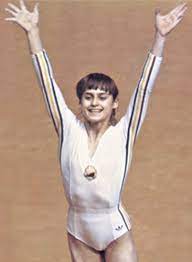
Era 5: 2000s – present
The modern era of women’s gymnastics is characterized by a focus on difficulty and innovation. Gymnasts today are performing skills that were once considered impossible, such as the Yurchenko double pike vault and the triple-twisting Yurchenko vault.
These vaults became possible with the introduction of the table vault in the early 2000s which made it safer to attempt difficult skills.
Because female gymnastics is so stunning to watch and is visually impressive, modern-day gymnasts have benefited from the rise of social media, YouTube and the increased popularity of the sport.
The US college system is popular around the world and many elite gymnasts have found a level of fame that offers a comfortable lifestyle outside of the gym. But that level of success does not come easily as most female gymnasts will have started at a young age, putting in thousands of intense training hours to achieve professional success. It is still the case that female gymnasts usually retire by their early 20s.
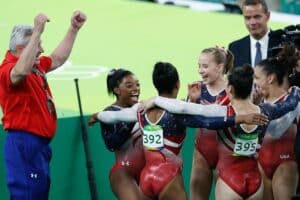
Names like Simone Biles, Ally Raisman, Gabby Douglas and many more are recognized globally because of their achievements in modern-day women’s gymnastics.
Milestones in Women’s Gymnastics
Throughout the history of women’s gymnastics, there have been numerous milestones that have helped shape the sport into what it is today. Some of the most significant milestones include:
- First Olympic Appearance
Women’s gymnastics first appeared in the Olympic Games in 1928 in Amsterdam, with only team events being contested. Individual events were added in 1952 at the Helsinki Olympics.
- First Perfect 10
Nadia Comaneci, a Romanian gymnast, made history at the 1976 Montreal Olympics when she became the first gymnast to score a perfect 10.0. Because of changes to the scoring systems, a perfect 10.0 is no longer possible.
Artistic Gymnastics v Rhythmic Gymnastics
Artistic gymnastics and rhythmic gymnastics are two distinct disciplines within the sport of gymnastics. Artistic gymnastics focuses on strength and power, with athletes performing a series of complex acrobatic moves on various apparatus. Rhythmic gymnastics, on the other hand, focuses on grace and flexibility, with athletes performing choreographed routines using various hand-held apparatus.
Both types of gymnastics require immense skill and dedication, and athletes in both disciplines often start training at a very young age.
Male artistic gymnasts compete on six types of apparatus: Floor, Vault, High Bar, Parallel Bars, Pommel Horse and Rings.
Female artistic gymnasts also compete on the floor and vault but use the beam and uneven bars to make up four types of apparatus at competitions.
Rhythmic gymnastics is only competed by female gymnasts (though there is a growing interest for male rhythmic events).
Gymnastics Today
Today, gymnastics is a popular sport that is practiced and watched all over the world. From the Olympics to local competitions, gymnastics continues to captivate audiences with its mix of strength, grace, and athleticism.
However, the sport is not without its controversies. In recent years, there have been concerns about the safety of some gymnastics equipment, as well as allegations of abuse within the sport.
There is a wide range of disciplines in gymnastics which shows how the sport has diversified in recent years. As well as the popular Artistic and Rhythmic there is Power Tumbling, Trampoline, Acrobatics and Aerobics.
The Future of Gymnastics
As gymnastics continues to evolve, it is likely that we will see new events and disciplines emerge. There may also be a greater emphasis on making the sport more inclusive and accessible to a wider range of athletes.
Additionally, there will likely be a continued focus on athlete safety and well-being, with measures being taken to address some of the concerns that have been raised in recent years.
Conclusion
The evolution of gymnastics is both fascinating and inspiring. From its origins in ancient Greece to the modern-day Olympics, gymnastics has continued to captivate audiences with its mix of strength, grace, and athleticism.
As the sport continues to evolve, it is likely that we will see new events and disciplines emerge. However, it is important to ensure that the sport remains safe and inclusive, with a focus on the well-being of its athletes.
- A Complete Guide to Gymnastics Hand Rips
 Are you tired of dealing with painful gymnastics rips on your hands from training? Look no further – this article offers a comprehensive approach to… Read more: A Complete Guide to Gymnastics Hand Rips
Are you tired of dealing with painful gymnastics rips on your hands from training? Look no further – this article offers a comprehensive approach to… Read more: A Complete Guide to Gymnastics Hand Rips - Is Gymnastics Dangerous? (Facts and Comparisons)
 Gymnastics is acknowledged as a highly technical and physically demanding sport. It inherently carries a risk of injury, which is why most coaches and clubs… Read more: Is Gymnastics Dangerous? (Facts and Comparisons)
Gymnastics is acknowledged as a highly technical and physically demanding sport. It inherently carries a risk of injury, which is why most coaches and clubs… Read more: Is Gymnastics Dangerous? (Facts and Comparisons) - The Fascinating Evolution of Gymnastics (History and Facts)
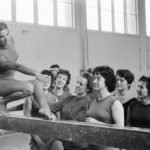 Gymnastics is a sport that has been around for centuries and has evolved significantly throughout history. From its origins in ancient Greece to the modern-day… Read more: The Fascinating Evolution of Gymnastics (History and Facts)
Gymnastics is a sport that has been around for centuries and has evolved significantly throughout history. From its origins in ancient Greece to the modern-day… Read more: The Fascinating Evolution of Gymnastics (History and Facts) - The Ultimate Parallel Bars Skills List
 Parallel bars are one of the most challenging events in men’s gymnastics. Mastering the right moves first on parallel bars is essential to improving your… Read more: The Ultimate Parallel Bars Skills List
Parallel bars are one of the most challenging events in men’s gymnastics. Mastering the right moves first on parallel bars is essential to improving your… Read more: The Ultimate Parallel Bars Skills List - The Long-Term Effects of Gymnastics on the Body (A Complete Guide)
 While gymnastics can offer many benefits, such as improved fitness and self-confidence, many people also ask what are the Long-Term Effects of Gymnastics on the… Read more: The Long-Term Effects of Gymnastics on the Body (A Complete Guide)
While gymnastics can offer many benefits, such as improved fitness and self-confidence, many people also ask what are the Long-Term Effects of Gymnastics on the… Read more: The Long-Term Effects of Gymnastics on the Body (A Complete Guide) - What Age Does Competitive Gymnastics Start?
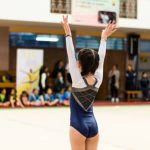 Ever wondered what age does competitive gymnastics start? It’s well known that gymnasts start training at a young age to develop the skills and strength… Read more: What Age Does Competitive Gymnastics Start?
Ever wondered what age does competitive gymnastics start? It’s well known that gymnasts start training at a young age to develop the skills and strength… Read more: What Age Does Competitive Gymnastics Start?
